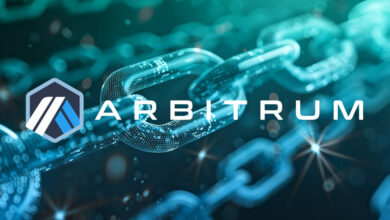Web3 games will gain an audience when we stop talking about Web3

The following is a guest post by Shiti Manghani, COO at STEPN.
In this ever-evolving digital world, we don’t sit at our laptops and marvel at how electricity is an incredible technology. We often take our technologies for granted. When you read this article, you’re not thinking about the server that hosts or builds the HTML. We are used to these wonders and rarely reflect on the underlying technology that drives our daily lives.
Most of us are content with technology blending seamlessly into the background. This perspective extends to the realm of gaming. Gamers are primarily concerned with functionality and ease of use.
The gaming community is skeptical of mainstream gaming companies trying to incorporate aspects of Web3. EA faced backlash in November 2021 for discussing its Web3 intentions, and other high-profile game companies such as Microsoft, Valve, and Epic Games are staying out of the fray altogether, refusing to embrace NFTs in games.
Do what we do best: BUILD
If Web3 gaming is to succeed, we need to bridge the gap and win over the Web2 audience. NFTs lack intrinsic value for many players and not everyone values digital ownership. Many gaming studios attempt to superficially integrate NFTs, resulting in NFTs existing in name only, offering players little control over the secondary markets. It often looks like a mere microtransaction outfit, driven by corporate boards capitalizing on the trend without understanding the unique essence of blockchain.
We need to stop shouting about the technical structures of Web3 gaming and focus our conversations on improving the user experience. Ultimately, users are less concerned about whether a game is running on-chain or off-chain. What really matters is that games are made to be easy to use and enjoyable. Be it gaming or Web3, the primary concern of users is the experience they face while navigating any particular platform.
Whether it’s buying their first NFT or creating a wallet, the catalyst for their loyalty is the presence of a well-designed, user-friendly app that seamlessly facilitates actions.
If users are faced with a series of buggy, poorly designed apps that don’t match the quality they’re used to, they’re more likely to reject the whole idea altogether. Finding a balance with Web3 games in this aspect is key. If a developer decides to incorporate NFTs, they should be used to enhance the user experience without detracting from the core gameplay.
Funding is not a dirty word
In general, the “monetization” of games is not a bad thing. Strangely, when we mention Web3 or crypto games, monetization is often painted negatively. It is often forgotten that the film and music industries, combined, still fall short of the huge profits of the gaming industry. Funding is, in fact, an inherent part of the game. Recent industry statistics and forecasts suggest a staggering jump in revenue from $282 billion in 2023 to $666 billion by 2030. A large part of the gaming industry consists of a secondary market for in-game assets located in a legal gray area, often on third-party websites.
While game developers have made some legitimate attempts to host their own secondary in-game markets, most publishers shy away from doing so. This is mainly due to higher margins on core sales and incentivizing users to monetize the game’s integrated design and development.
The lack of legitimate secondary trading options leads to a large gray market from the dark web, on non-resident platforms. With Blockchain, we provide users with a legal way to trade assets, instead of going to the dark corners of the Internet.
Community focus
Another critical factor to consider is the role of strategic gameplay, rather than relying solely on “chance-based” mechanics. This element is sure to play a key role in enticing the Web2 audience who invest their money, valuable time and energy. When users dedicate their time and cognitive effort to design the strategy game and form lively communities to discuss resource management, NFTs, assets, and tactical moves, a genuine gaming culture begins to flourish.
The combination of control, involvement and passion displayed by the players shapes the trajectory of these projects. A strong community is the cornerstone of a game’s sustainability and long-term growth.
To engage the gaming audience, we need to address the main factors that hook users to traditional games. rich gameplay and incentives. While the financial aspect is undeniably central to the Web3 space, it is equally important to enhance the richness of the game with better UI and UX, so it naturally becomes the right game for them to try.
There will always be purists reluctant to embrace Web3 products, maybe the late adopters, but there will be players who appreciate the rich gameplay and now have a legitimate platform to trade and use their gaming NFTs. These enthusiasts will likely be the first champions of truly enjoyable and exciting Web3 games.
As an industry, we need to make enjoyable products and not scare our audience. The Web3 infrastructure isn’t there yet to support a huge ecosystem, so instead, let’s make great games that people love using the Web3 components that enable a fair game asset ownership and trading system.





